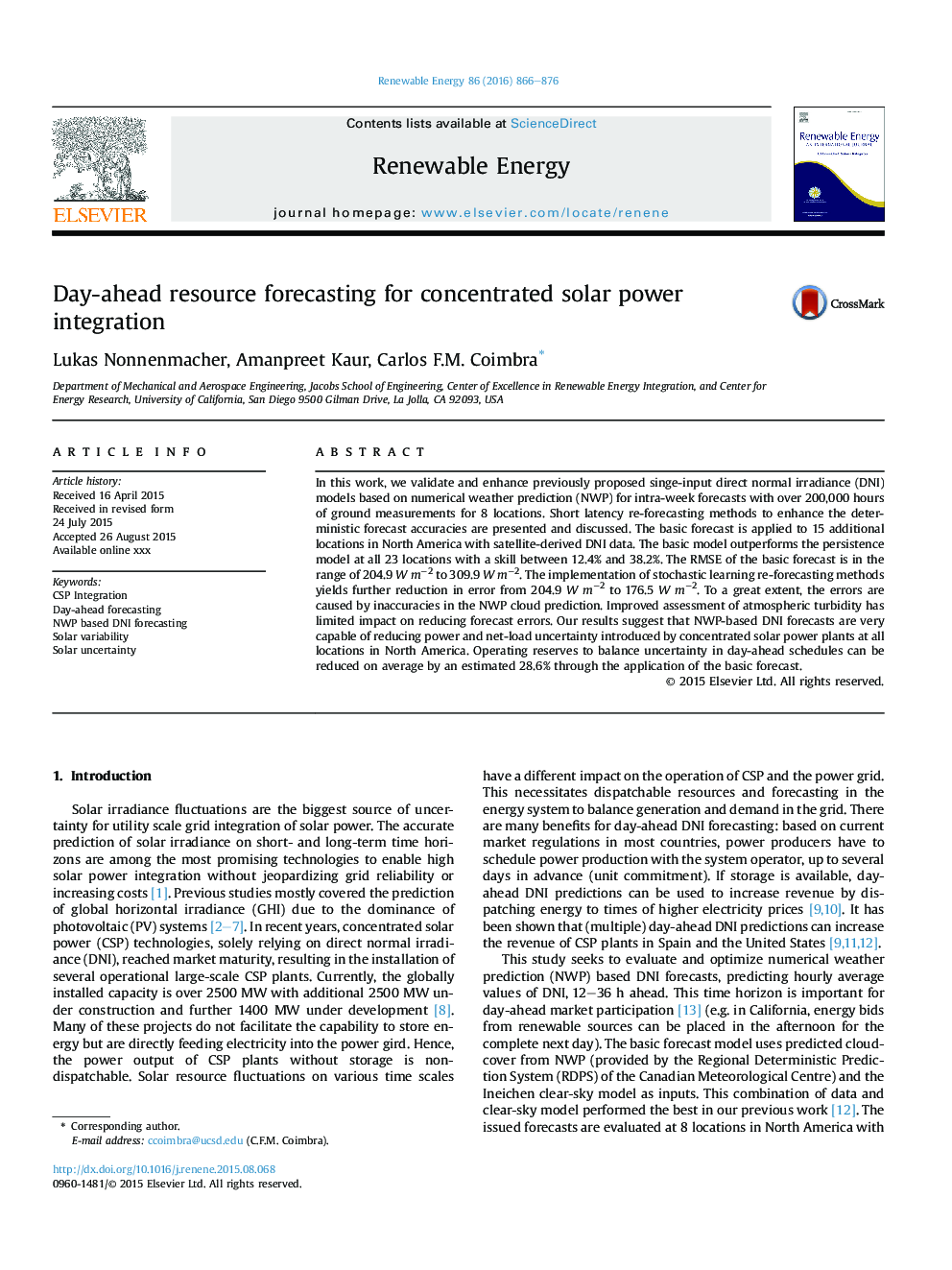| Article ID | Journal | Published Year | Pages | File Type |
|---|---|---|---|---|
| 6766802 | Renewable Energy | 2016 | 11 Pages |
Abstract
In this work, we validate and enhance previously proposed singe-input direct normal irradiance (DNI) models based on numerical weather prediction (NWP) for intra-week forecasts with over 200,000 hours of ground measurements for 8 locations. Short latency re-forecasting methods to enhance the deterministic forecast accuracies are presented and discussed. The basic forecast is applied to 15 additional locations in North America with satellite-derived DNI data. The basic model outperforms the persistence model at all 23 locations with a skill between 12.4% and 38.2%. The RMSE of the basic forecast is in the range of 204.9Â WÂ mâ2 to 309.9Â WÂ mâ2. The implementation of stochastic learning re-forecasting methods yields further reduction in error from 204.9Â WÂ mâ2 to 176.5Â WÂ mâ2. To a great extent, the errors are caused by inaccuracies in the NWP cloud prediction. Improved assessment of atmospheric turbidity has limited impact on reducing forecast errors. Our results suggest that NWP-based DNI forecasts are very capable of reducing power and net-load uncertainty introduced by concentrated solar power plants at all locations in North America. Operating reserves to balance uncertainty in day-ahead schedules can be reduced on average by an estimated 28.6% through the application of the basic forecast.
Keywords
Related Topics
Physical Sciences and Engineering
Energy
Renewable Energy, Sustainability and the Environment
Authors
Lukas Nonnenmacher, Amanpreet Kaur, Carlos F.M. Coimbra,
